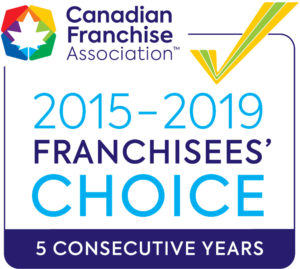“The more that you read, the more things you will know. The more that you learn, the more places you’ll go.” – Dr. Seuss.
The best business books allow you to learn from others’ triumphs, mistakes, and challenges. They also inspire you to go further in your career or grow your business. Reading may seem like an unnecessary luxury in your busy life but think of reading the best business books as an investment in yourself. Get started now by reading this blog to learn why you should take the time to read, which best business books are worth your time, and how you can read more efficiently.
WHY TAKE TIME TO READ? – 4 Important Reminders
1.READING LEADS TO SUCCESS
The best business leaders work hard to attain greatness and even though they’re extremely busy, they make reading an integral part of their routine.
Warren Buffet routinely spends hours reading and stated knowledge “builds up, like compound interest”.
Mark Zuckerberg reads a book every second week. “Books allow you to fully explore a topic and immerse yourself in a deeper way than most media today.”
Surveys repeatedly show most CEOs and executives read 4-5 books per month. Clearly, there is value in reading books if you want to create success.
2.READING CAN HELP YOU ACCOMPLISH GOALS
Have you ever wanted to do something, but you didn’t know enough to tackle the task? Why not set a goal and read to accomplish it?
Elon Musk didn’t want to pay others to build his rockets, so he learned how to do it himself. Tony Robbins learned to speed read so that he could improve his prospects after a hard childhood. Reading can help you accomplish your goals.
3.READING EXPOSES YOU TO IDEAS, TECHNIQUES METHODS
When learning how to run a successful business, you don’t have to go it alone. Many times you can expose yourself to ideas you’ve never heard of before. You can also learn why some techniques and methods withstand the test of time and create successful businesses.
4.READING MAKES YOU MORE PERSONABLE
Reading increases your world view as a business owner and helps you destress and unwind.
Discussing books you’ve read is also a great way to connect with others when you’re networking. You can learn a lot about a person’s values and whether they align with your own.
The books we’ve recommended below are highly-praised by many successful leaders. They provide priceless insights into how you can attain extraordinary business and personal success.

WHICH BEST BUSINESS BOOKS ARE WORTH YOUR TIME? – 3 Recommendations
1.REWORK – JASON FRIED AND DAVID HEINEMEIER HANSSON
This New York Times bestseller was written by the founder and co-founder of the successful company, Basecamp. Hansson also invented Ruby Rails, the powerful programming framework used on Twitter, GitHub, Shopify, and more.
Their novel business ideas stood the corporate world on its head and their business success attests to the effectiveness of their methods. Jeff Bezos, CEO of Amazon went so far as to say they’ve rewritten the rules of business.
Instead of providing the same boring advice for burgeoning businesses, they provide a better, faster, and easier way to succeed today. Fried and Hansson’s system suits go-getters who prefer to learn through doing.
The book delivers its ideology simply and it challenges many of the business world’s traditional notions. Fried and Hansson suggest you don’t need an office; you don’t need to work insane hours; and you don’t need to deal with frustration.
It’s written in short, easily-digested chapters such as “No Time is No Excuse”, “Fire the Workaholics”, and “Pick a Fight”. Each provides a simple takeaway, clarity, and inspiration.
Read this book. It could change how you approach your business and your personal life.
2.INFLUENCE: THE PSYCHOLOGY OF PERSUASION – ROBERT B. CIALDINI
Originally published in 1984, this book continues to rank as one of the best business books of all times. After almost forty years, it still drives business owners and marketers.
Business magnates such as Charlie Munger (vice chairman of Berkshire Hathaway), Guy Kawasaki (marketing specialist, author, and Silicon Valley venture capitalist), Max Levchin (co-founder of PayPal), and Paul Allen (co-founder of Microsoft) rank it number one.
Why does this book still inspire so many people? It explains the psychology behind humanity’s’ mindset and Cialdini’s principles are still the basis of most marketing techniques today.
Cialdini’s book describes 6 Principles of Influence:
- Reciprocity
- Commitment/consistency
- Social proof
- Authority
- Liking
- Scarcity
You’ve probably seen articles about several of these, but you may not understand their psychological underpinnings.
For instance, most of us know that once a person commits to a brand, they are more likely to become a consistent customer (commitment/consistency). However, Cialdini’s psychological explanation suggests a person commits, because the brand aligns with their self-image and not because of products and services specifically.
Obviously, understanding the reasons why a person behaves the way they do is very, very powerful marketing tool. For instance, when you understand the commitment principle you may want to provide a free sample, guide, or another useful item to potential customers to test the waters. If what you provide aligns with the person’s self-image they eventually see themselves as a customer and they’re more likely to buy.
Cialdini’s book is very insightful, even if you have a background in sales or marketing. The principles, techniques, and strategies in this book are timeless and marketers and business leaders worldwide attest to their effectiveness.
Since this is an older publication, you can listen to the audiobook for free. However, you may want a print copy so you can make notes and refer to it often.
3. DEEP WORK – CAL NEWPORT
This book was Amazon’s best pick for business and leadership and a Wall Street Journal business bestseller. The reason for this book’s huge success is that it teaches you how to eliminate distractions and achieve focus in our very demanding world.
Clearly, this is a valuable skill if you want to sort through the almost endless information we’re bombarded with daily. You also learn to decipher complex information for better results in less time.
These skills are especially helpful to entrepreneurs who wear many hats and often feel like they’re drowning in their tasks. It’s vital they accomplish meaningful goals if they want their business to succeed and even more so if they want to maintain a healthy work/life balance.
Newport’s book provides many tips to help you carve out time and space to focus on what’s important. These include principles such as steering away from social media, cellphones, and email. If you think this is impossible in the business world, he shows you how and why it is so important.
The author also allocates a strict time for work to limit burnout and maintain focus and backward planning to schedule your day. The idea is the more you set personal work limits, goals, and deadlines, the less time you have to dwell on frivolous activities.
Newport walks the walk too. He doesn’t work after 5:30 pm and seldom on weekends. Despite this, he’s an author, produces many academic papers, and he’s a computer science professor.
His book also offers many novel ideas to handle repetitive tasks that eat up your day. He shows you how you can focus on what’s “wildly important” instead of the shallow, mundane work that seems to occupy most of our time. This includes creating a visible tracking system, measuring your output, and staying accountable.
The benefits of this book include spending more time in the “zone” where you get things done. His ideas apply to your business and personal life so you can achieve more, be happier, and alleviate stress.
You can enjoy Newport’s work as an audiobook, e-book, or book so it’s simple to squeeze into your busy life.
We’re provided you with three choices, but scores of books exist to help you improve your skills and your life.
Don’t limit yourself to these or other best business books such as Tim Ferriss’ “The Four Day Workweek”, Napoleon Hill’s “Think and Grow Rich”, and Dale Carnegie’s “How to Win Friends and Influence People”. Even though they’re immensely popular for good reasons, they aren’t the only books that offer value. If you haven’t read them, you should.

HOW CAN YOU READ MORE EFFICIENTLY? – 7 TIPS
You may wonder how you can possibly read more when you’re already very busy. Here’s how many business leaders find the best business books and time to read, even with packed calendars.
1. CREATE A HABIT
Warren Buffet stated one of the keys to success is to “read 500 pages every day.” While no one’s going to count the pages you read, you should commit to reading a certain amount each week.
How do you find the time? Watch less TV suggests Tom Corley, author of “Rich Habits: The Daily Success Habits of Wealthy Individuals.” His research revealed 67 percent of wealthy individuals watch TV less than one hour a day.
Some people choose to set a timer for thirty-minutes daily reading sprints to avoid burnout. Others read 30 pages before they go to sleep or read during a short break. Still others listen to audiobooks during their commute.
Whatever method you choose, ditch the book if it doesn’t resonate with you within the first few chapters. You won’t like it any more even if you struggle through until the end.
2. CHOOSE BOOKS THAT INTEREST YO
This may seem obvious, but you’d be surprised how many people read books just because they feel they should. Avoid subjects that don’t interest you and vary your choices.
You don’t always need to read business books either. Anything that adds to your knowledge such as biographies from inspiring leaders and philosophical and humanitarian publications are also worthwhile and relaxing. After all, we all need time to unwind and should learn about the world we live in.
3. CREATE A LIST
There’s no lack of inspirational sources if you want book recommendations. Friends, family, peers, bookstores, curated reading lists, blogs, and book sites are good starting points.
Goodreads is a great website that offers ratings and reviews and you can track your reading accomplishments. You can also join a book club for discounts and suggested titles.
Prioritize your list and always ensure you have several books on-hand. Many people read more than one book at a time to avoid boredom and some books won’t be what you expect. If you don’t have a backup book, you could stop using your newly-formed reading tradition.
4. MAKE NOTES
If something resonates with you in a book, write notes in the margins, highlight or underline the copy. All e-readers allow you to add notes and some allow annotations if you have a stylus.
Some people also mark particular pages with Post-it notes or bookmark so they can find passages easily when they want to refer to them later.
5. TAP INTO TECHNOLOG
Even though there’s nothing quite like to feel of a book in your hands, it isn’t always convenient to lug one around. Use your laptop, tablet, or e-reader when traveling or listen to an audiobook while working out.
If a book really impresses you and you make notes on your device, export them to a program like Evernote. Some people wait until they read the entire book and then summarize it in a few sentences.
6. DON’T BE AFRAID TO SKIM
You don’t need to read every single word to get the gist of a book. If you’re reading a book for specific information you may want to dwell on particular areas, but there will still be plenty of fluff.
This article provides many tips on how you can skim to save time, find answers, or research a project. Skimming saves valuable hours so you can read more books or attend to other valuable tasks.
7. READ FASTER & RETAIN WHAT YOU READ
Once you get into the reading habit, you’ll want to read faster, but retain what you’ve read.
This in-depth article offers a quick reading test to discover your reading speed and retention. It also offers a compilation of methods for improvement and how to use your book notes wisely. Stop making excuses and start reading. Knowledge can provide the competitive edge you need if you truly want to create a successful business and a better life. Always remember what the good doctor says:
“You can find magic wherever you look. Sit back and relax, all you need is a good book.” – Dr. Seuss
Postcard Portables offers many products to help you build your brand and customer base. We’re not just a sign company – we offer advertising solutions.
CONTACT US ANYTIME – We’re always happy to help!











